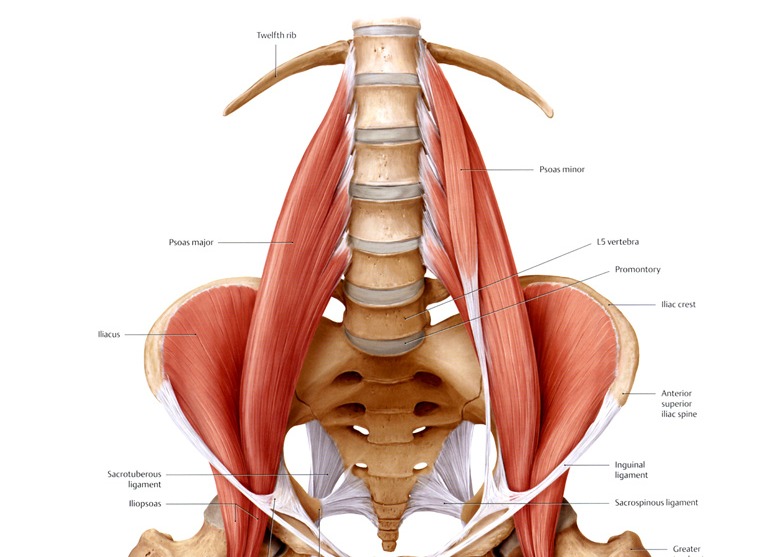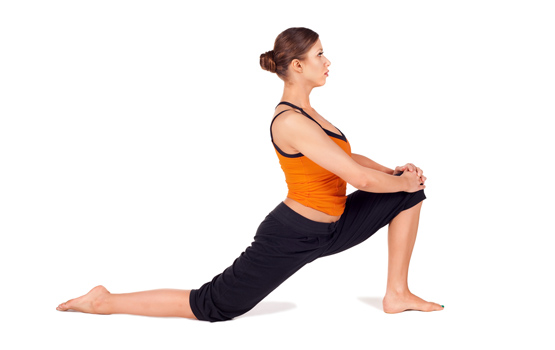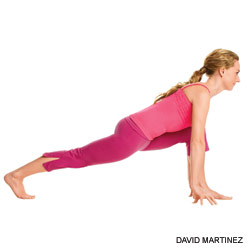The "Muscle of the Soul"
This is a very interesting article about the psoas, which Liz Koch, author of The Psoas Book, refers to as the muscle of the soul. I've often heard of (and witnessed from time to time) a release of emotion when opening the hips. It's well known to yogis that we store a lot of emotional baggage in our bodies, particularly in the hip region. Koch indicates that a great deal of fear and anxiety might be related to the psoas muscle being in a constant fight or flight state due to the type of society in which we live. Too much sitting, a hyper focus on achieving, driving, and more causes a lot of tightness in this muscle that connects the femur to the spine and also to the diaphragm (the muscles that allows us to breath). This can lead to low back pain, constricted breath, hip pain and more. By bringing more balance and peace to the body, we can bring about more balance and peace to our minds.So how can we open up these often tight psoas muscles? The first step is to come into a constructive rest position. Lie on the back with the feet on the floor at sitting bone distance apart. Allow the low back to come into a natural lordodic curve - this is not an exaggerated curve, but the low back shouldn't flatten to the floor either. Try doing a few pelvic tilts to find the position that feels right. Allow the body to come to relaxation. You may notice that particular areas of the body don't respond well to relaxing. These are the areas that we hold tight habitually. Eventually your entire body should feel equally weighted to the floor with no part being 'suspended in air'.
I've often heard of (and witnessed from time to time) a release of emotion when opening the hips. It's well known to yogis that we store a lot of emotional baggage in our bodies, particularly in the hip region. Koch indicates that a great deal of fear and anxiety might be related to the psoas muscle being in a constant fight or flight state due to the type of society in which we live. Too much sitting, a hyper focus on achieving, driving, and more causes a lot of tightness in this muscle that connects the femur to the spine and also to the diaphragm (the muscles that allows us to breath). This can lead to low back pain, constricted breath, hip pain and more. By bringing more balance and peace to the body, we can bring about more balance and peace to our minds.So how can we open up these often tight psoas muscles? The first step is to come into a constructive rest position. Lie on the back with the feet on the floor at sitting bone distance apart. Allow the low back to come into a natural lordodic curve - this is not an exaggerated curve, but the low back shouldn't flatten to the floor either. Try doing a few pelvic tilts to find the position that feels right. Allow the body to come to relaxation. You may notice that particular areas of the body don't respond well to relaxing. These are the areas that we hold tight habitually. Eventually your entire body should feel equally weighted to the floor with no part being 'suspended in air'.
From here bring one knee in to the chest while keeping the back in the same position (ie natural lordocic curve). Slowly allow the other leg to straighten along the floor to come into wind relieving pose (Pawanmuktasana). You should feel the psoas begin to lengthen. Allow it to fully let go before moving to the other leg.
 Lunging in any form is going to stretch the psoas as well. From downward facing dog you can bring one foot up between your hands, stacking the knee over the ankle. The back knee can either stay up or release to the floor. In either position think about squeezing the legs toward the mid line of the body (toward each other) even though they aren't moving. This will maintain a strong foundation while ensuring you don't over stretch the psoas.
Lunging in any form is going to stretch the psoas as well. From downward facing dog you can bring one foot up between your hands, stacking the knee over the ankle. The back knee can either stay up or release to the floor. In either position think about squeezing the legs toward the mid line of the body (toward each other) even though they aren't moving. This will maintain a strong foundation while ensuring you don't over stretch the psoas. 
There are many yoga poses that help to release the psoas, these few will get you started. Following are a couple of others that will also be good the psoas release: